Clik here to view.

Chile is a country with a flourishing food, wine and beer culture, and it’s brimming in new-found confidence. I tasted my way around five areas of Chile: from ‘witch potatoes’ on Chiloé Island to artisanal beer brewing in Valparaíso. Here’s why now is the perfect time for foodies to visit Chile.
When I was a kid I had one of those atlas globes that you almost never see in children’s playrooms anymore. Mine was the blow-up kind, and before it became a soccer ball, got punctured and thrown away, I’d sit and set it to spin, jabbing down with my finger and wondering if I’d ever visit that country or another one distant day.
Chile was hard to put a finger on. Perhaps that’s why it intrigued me the most. I’d spin and jab, and end up in the Pacific. Spin again and again until eventually I’d skewer Santiago, and so somehow make it certain that one day I’d see it for myself.
Clik here to view.
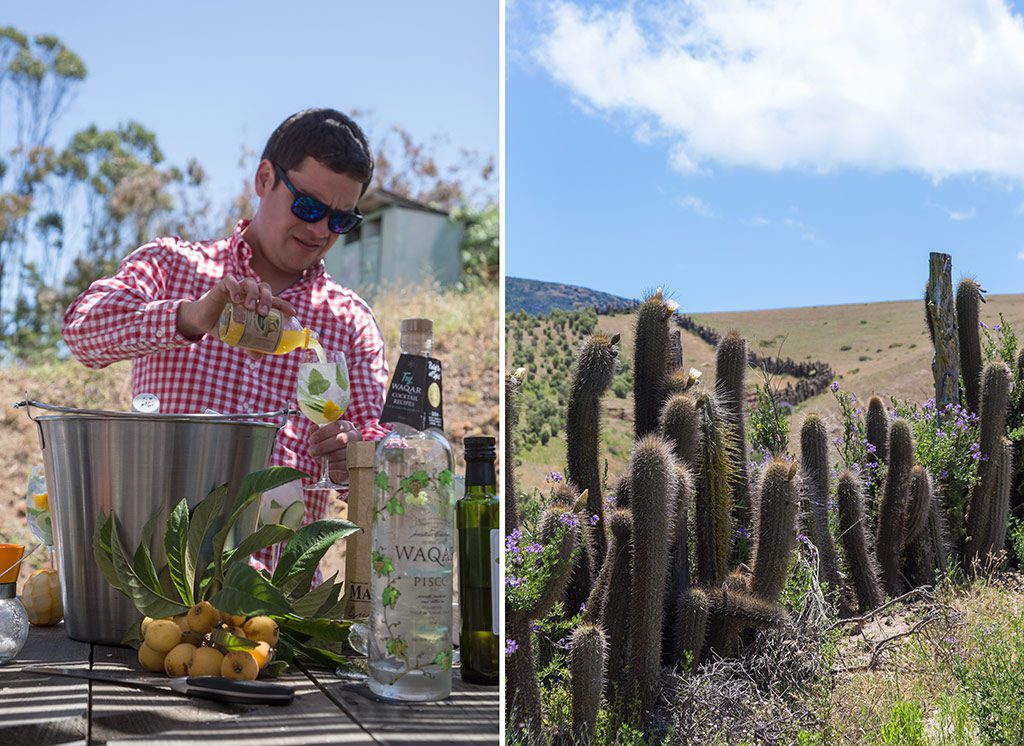
Drinking mango pisco and beer at Atrapaniebla brewery in the Limari Valley.
It took almost 30 years, but last spring I finally made it: an invitation to sample the spoils of its burgeoning artisanal food, beer and wine industries (boyhood dream – result!). Driving north from Santiago on that first, blustery day, what struck me most was not the exoticism of a childhood fantasy, but rather how much like home the land outside my window now appeared. Lowveld hills that might well have ringed Polokwane morphed seamlessly into Overberg Winelands and an aloe-studded Karoo. Vineyards and ocean and wind turbines flipped by. It felt like a home away from home. Not disappointing at all, but comfortingly familiar with just enough difference to be exciting. It was all the scenery I love in SA, but refitted with distant glacier-capped peaks and ranks of cacti fence lines marching single file towards them.
Clik here to view.
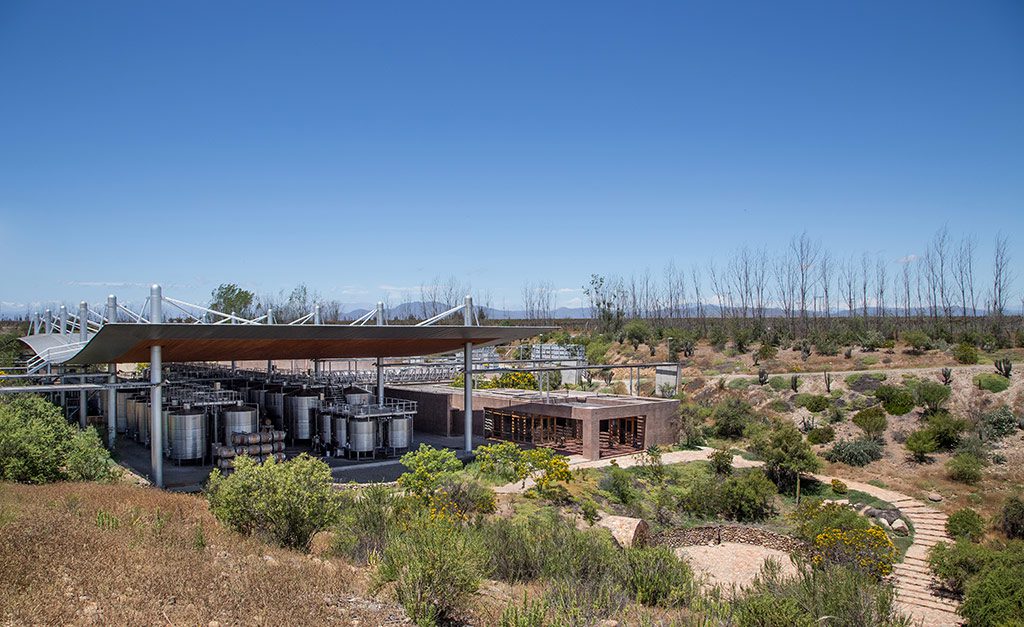
Tabalí Wine Estate is one of the finest in Chile.
The Limarí Valley
The Limarí Valley is the second northern-most grape-growing region in Chile and home to one of the country’s top wine estates, Tabalí. Tucked into a shallow canyon half way between Santiago and the Atacama Desert, gleaming stainless-steel vats and stacks of 250-litre wine barrels lie shielded from the relentless sun by a huge, sweeping wooden roof. When I arrived that afternoon, Señor José Palo was leading the wine tasting. In a deep Spanish accent he explained that Tabalí was one of the first wineries in the area, and that its Talinay Pinot Noir had been voted the best in Chile for the last three years. And none of it had yet been conceived when I was back in Cape Town, spinning that globe.
Clik here to view.
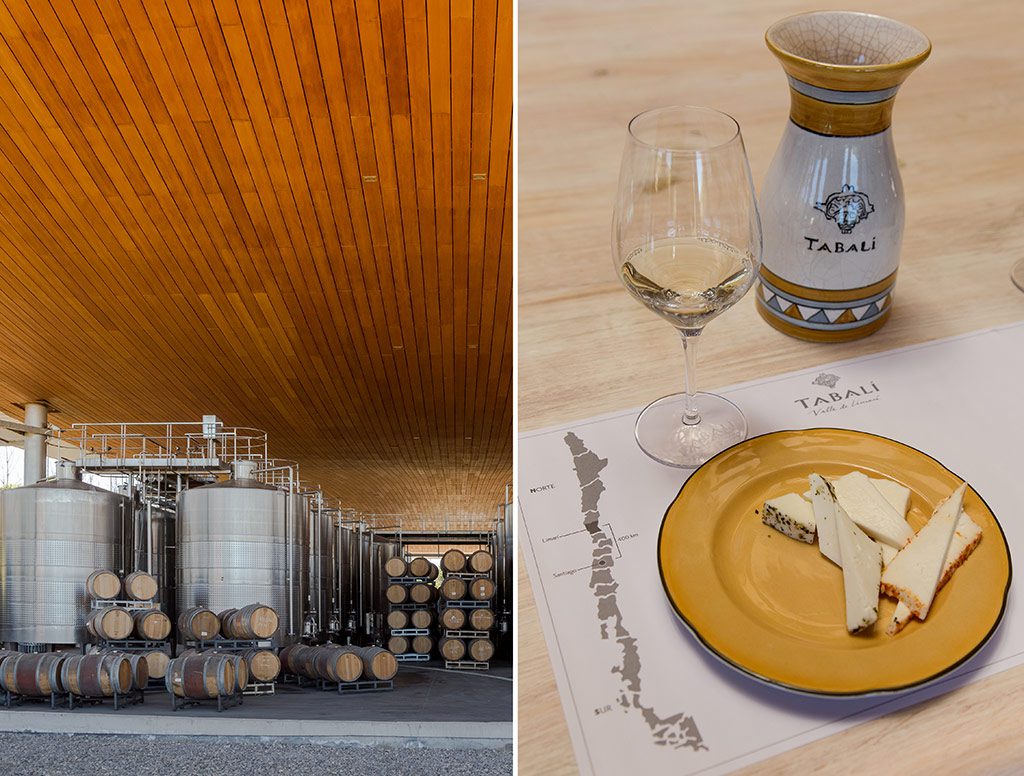
Wine tasting at Tabalí Wine Estate, where this beautiful sweeping roof shelters these massive vats from the intense northern Chilean sun.
‘Tabalí started in 1993 and the building was only finished in 2002,’ said José, filling my glass with a 2014 Sauvignon Blanc, another award winner. ‘The owner’s grandmother had a small house here, and he thought to try and make some wine. Now we produce about 60000 barrels a year, despite the drought.’
About a month before I’d arrived, the Limarí Valley had had its first rain in almost 11 years. It seemed an inordinately risky business starting a winery in such a parched region, but Tabalí’s gamble paled when, the next day, I met Marco Carcuro in a nearby village for lunch. Four years previously, Marco decided that what he really wanted to do was start a microbrewery. Not daunted by the near-total lack of water and already seven-year drought, he erected three 15 square-metre nylon nets on a hill overlooking his small agricultural community of Peña Blanca, just south of La Serena. Those nets now provide him with 2000 litres of Pacific fog each week, enough for a modest production (around 10000 bottles a month) of excellent, malty Atrapaniebla ale and rich, caramelly stout. Marco is a man who’s quick to smile.
Clik here to view.
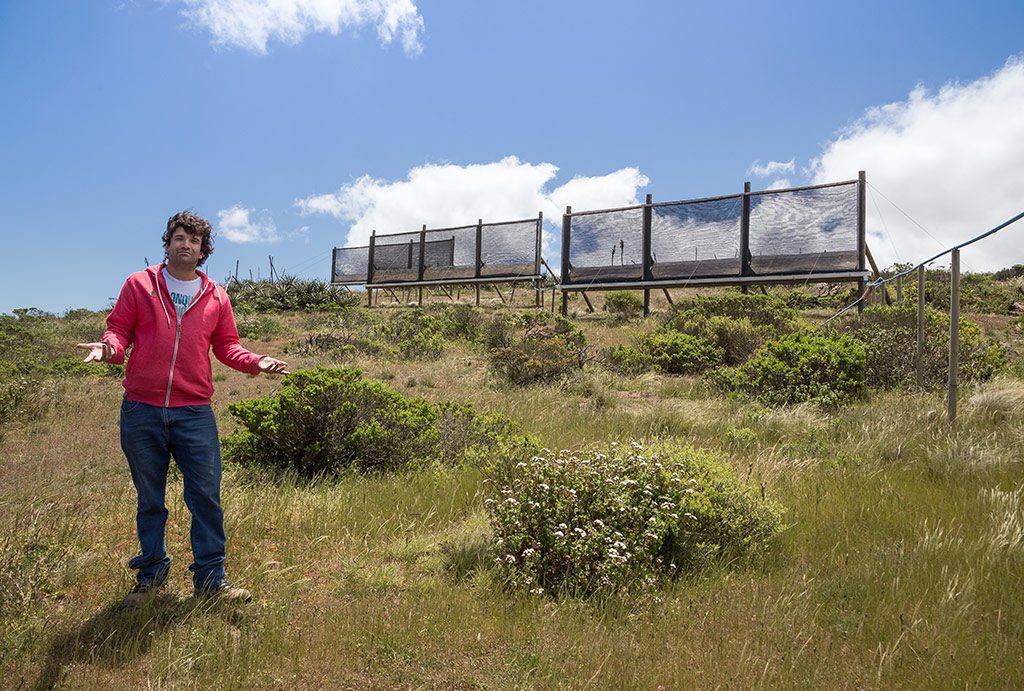
Marco Carcuro and his Pacific fog catchers.
Things to do in the Limarí Valley
1. Taste wine at Tabalí. From R215 per person.
2. Visit the Enchanted Valley nearby which has 1500-year old petroglyphs and mysterious, celestial carvings. R15 per person.
3. Drink Atrapaniebla in La Serena. It’s a beer brewed from Pacific fog, available at local pubs.
4. Visit the Pisco Waqar distillery, in Tulahuén. Similar to grappa, it’s to Chileans what brandewyn is to saffas. Try it neat or with Coke, or fresh mango juice.
Clik here to view.
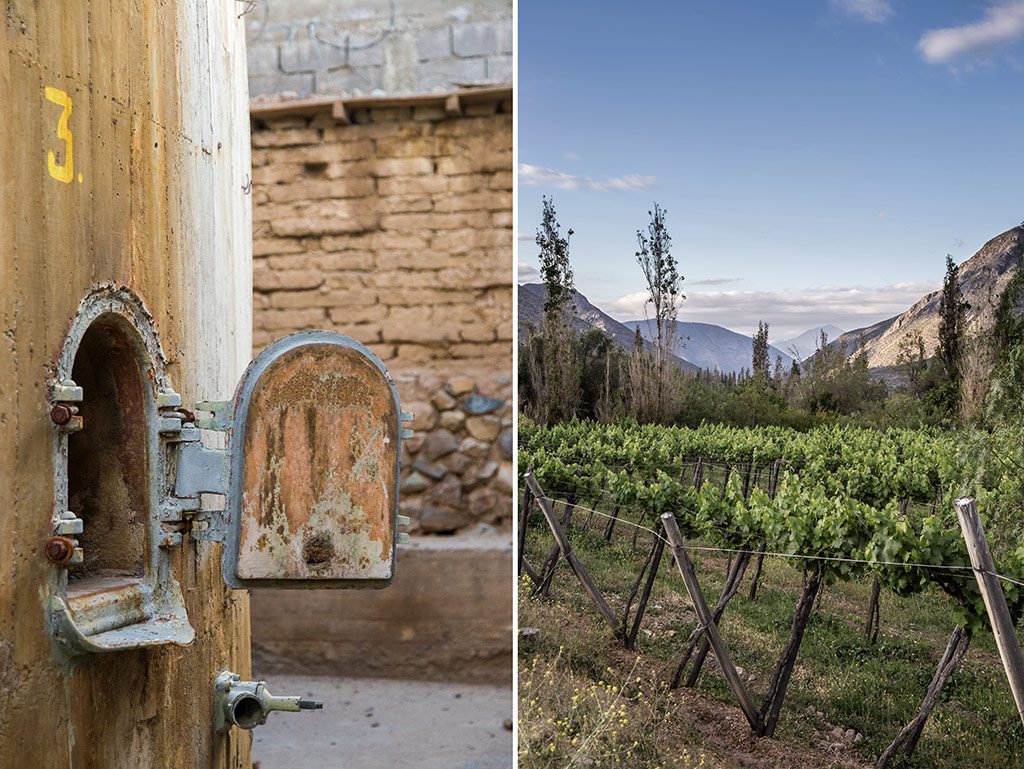
Pisco Waqar, in the small rural village of Tulahuen, is one of Chile’s premium pisco distilleries. Pisco is made from muscat grapes, seen here growing just a few metres from ancient vats, destroyed in one of Chile’s frequent earthquakes.
Clik here to view.
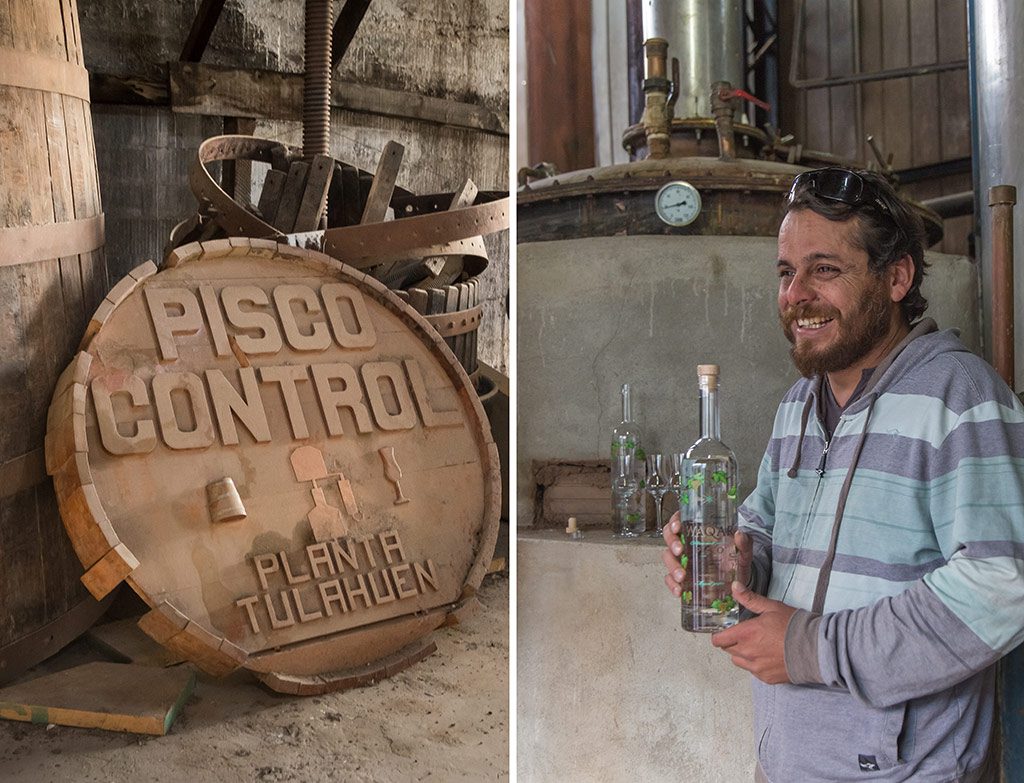
There’s an unhurried feel around the distillery. Master distiller Jaime Camposano sits beneath his two remaining alambique (stills), listening to Pink Floyd and slowly feeding their fires with the 10000kg of wood required to make a 1200-litre batch of Pisco Waqar.
Accommodation in Limarí Valley
1. Hacienda Santa Cristina in the rural hills north of Tabalí has rooms from R660 per person sharing, DB&B.
Clik here to view.
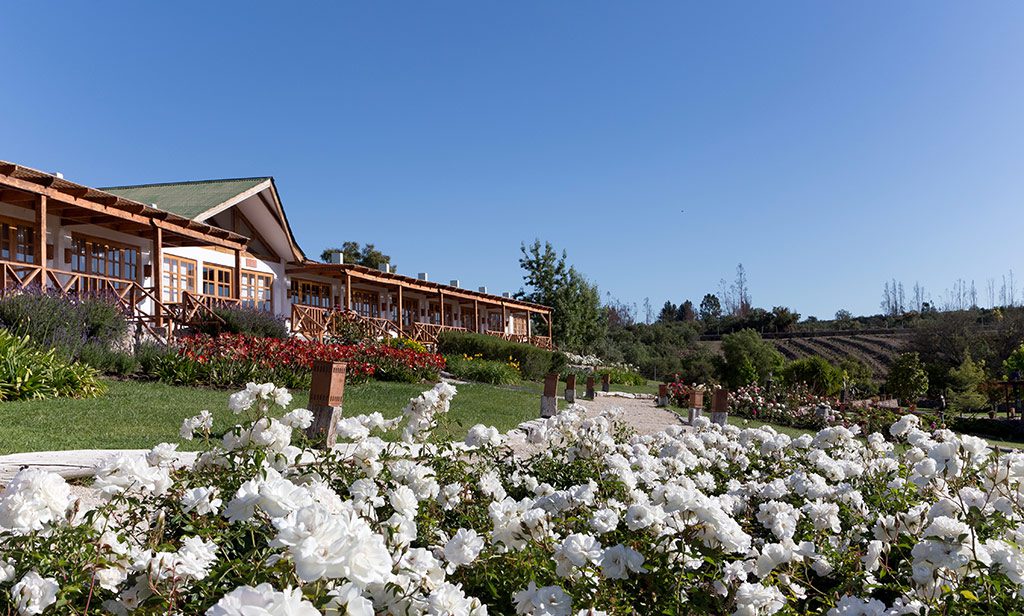
Hacienda Santa Cristina, is a working farm and hotel in the Limarí region.
Valparaíso
About 400 kilometres to the south, the colourful port city of Valparaíso, affectionately known as Valpo, is home to another entrepreneurial brewmaster with an easy laugh and ready smile.
Clik here to view.
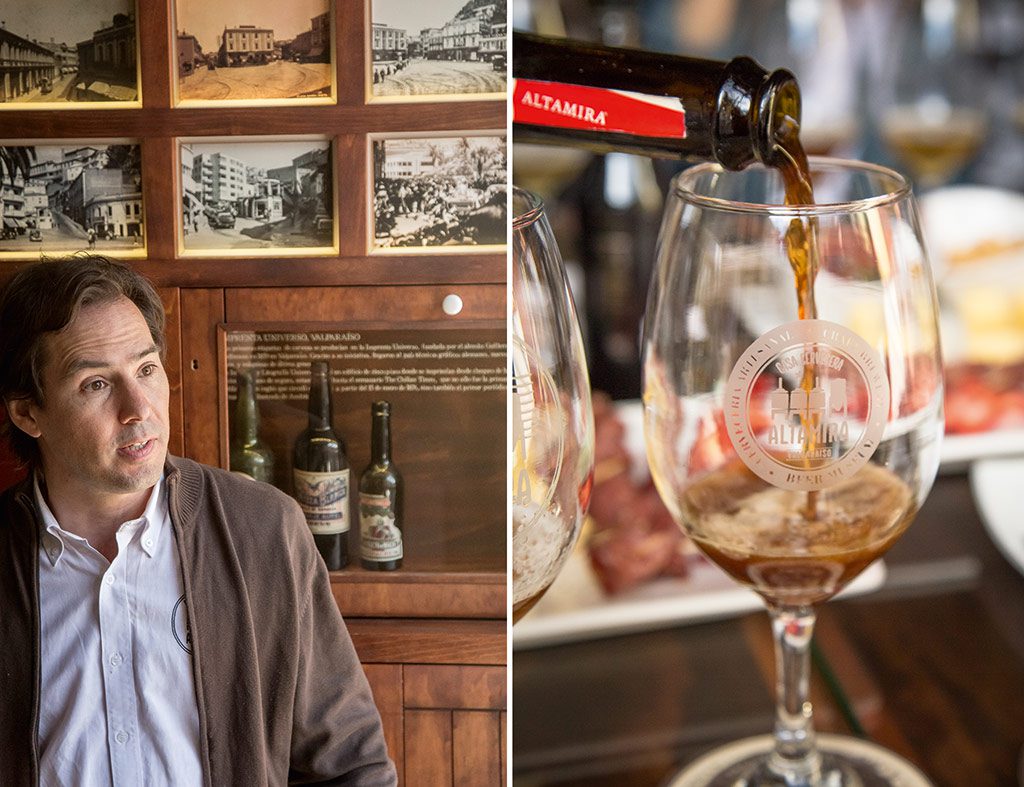
Altamira’s charming brew master, Sergio Moran.
Sergio Moran opened Altamira brewery six years ago, at the base of the 113-year-old Reina Victoria funicular in the heart of the old town. He chose the spot deliberately: it’s just 100 metres from where Irish-man Andrew Blest established Chile’s first-ever brewery in 1825. With a passion and pride for his country that was starting to feel ubiquitous, Sergio launched into the fascinating history of Valpo, which during the 1800s became the busiest port in Latin America. Immigrants poured in from Europe, especially from the British Isles and Germany, settling onto the 42 hills that now comprise the city. Business was good, and Valpo boomed.
For more photos, also read: the street art of Valparaíso
‘This was the first city in South America to publish a newspaper with printed pictures,’ enthused Sergio, as jaunty 20s swing bopped in the background.
‘Mr Blest brought experts from Germany to print his beer labels and the technology then moved to newspapers, spreading out from Valpo across Chile and Latin America.’
Clik here to view.
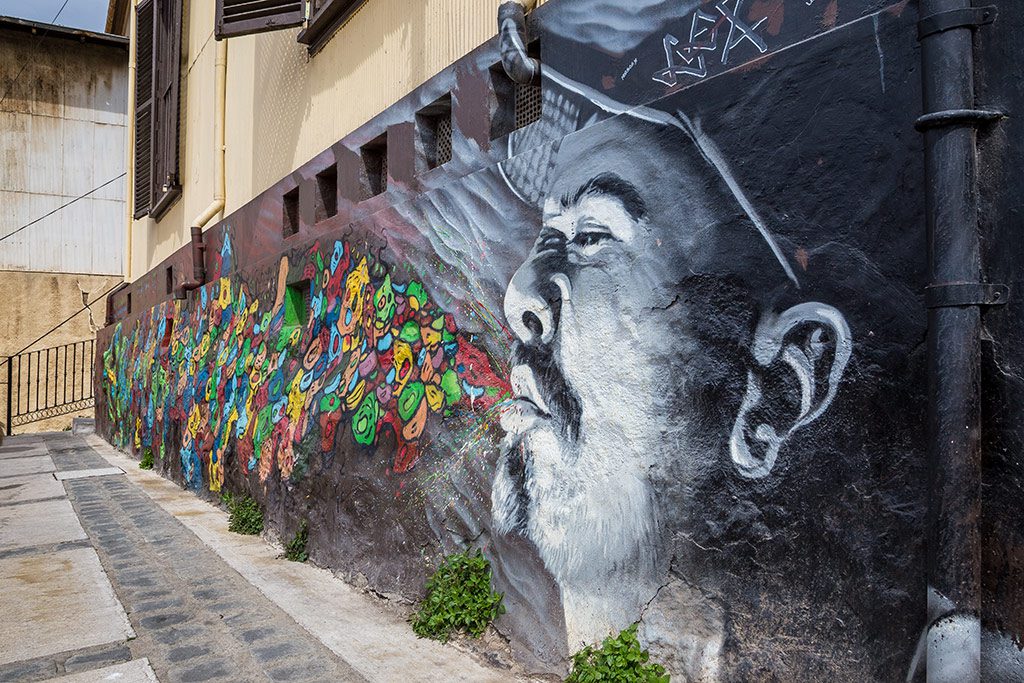
Valparaiso is internationally recognised for it’s street art.
Outside Altamira, the city’s narrow lanes and apartment walls are canvasses for more modern imagery; awash in bright, kaleidoscopic street art. Graffiti has been part of Valpo for years, but according to Sergio it’s only in the last five or six that a new crew of escritores (literally ‘writers’ – the preferred nomenclature – not ‘artists’ or, heaven forbid, ‘painters’) have gone to work on its central suburbs, especially nearby Alegre and Conception Hills. And it’s with the blessing of the municipality. In 2003, Valparaíso’s historic quarter was declared a Unesco World Heritage Site, but
far from miring the area in traditionalist inertia, street art was encouraged. Now admiring visitors are fooding in and young ‘writers’ are making a name and a living from their craft. It’s a massive turnaround for a town that’s been in more or less continual decline since 1914 when the opening of the Panama Canal all but stripped the port of its livelihood.
Clik here to view.
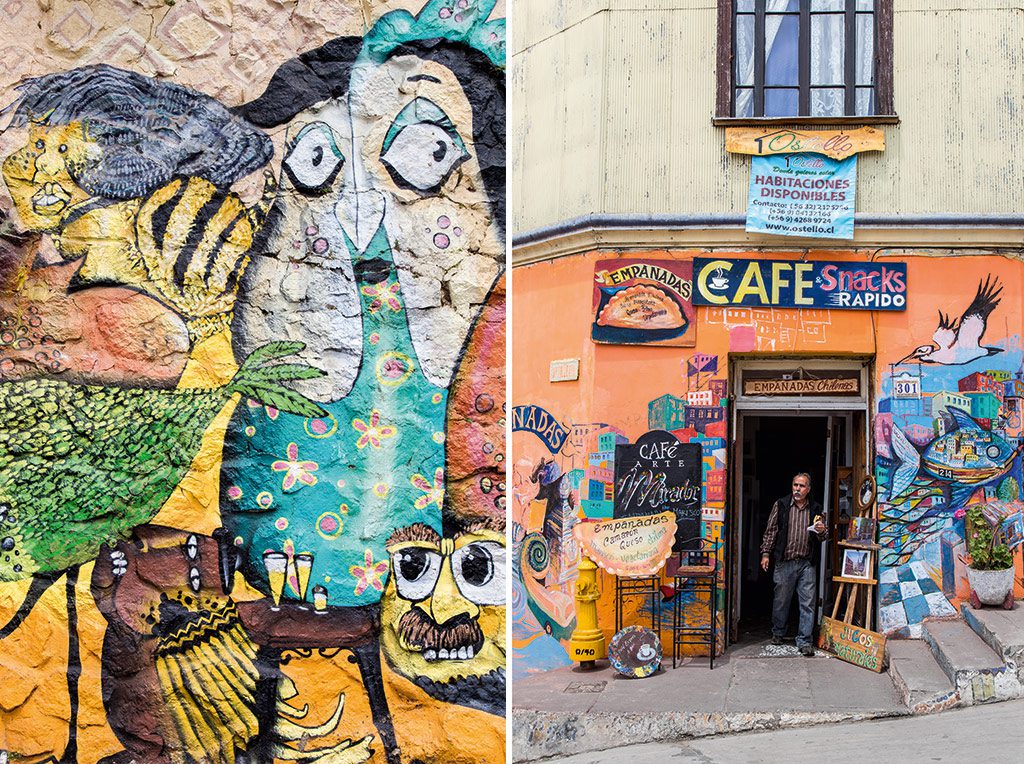
The colourful streets of Valparaiso. See Jekse&Cines for more of Valparaiso street art.
Sergio’s passion for Valparaíso, past and present, spills over into his brewing style. His three beers, a pale ale, an amber ale and a stout, follow as close as possible to Blest’s original recipes. Sergio also spent some time at the famed Trappist beer-brewing monasteries of Belgium and the result is a pale ale that won best in Chile in 2012 and an amber that won the same in 2014. He exports only 100 cases to Santiago each year; otherwise his entire stock is consumed in his pub, or at a few local restaurants.
Things to do in Valparaíso
1. Do a Tours for Tips guided walk. You’ll see street art and the historic centre. It’s two to three hours and payment is on a tip basis. R120 per person is a good tip.
2. Visit the Altamira brewery. It’s also a restaurant and beer museum. Drafts from R60 per person.
3. Eat at Fauna Restaurant. The food is excellent and it has views of the hills and port. Mains from R150 per person.
4. Cafe de Iris is where locals go. Meals from R120 per person.
Clik here to view.
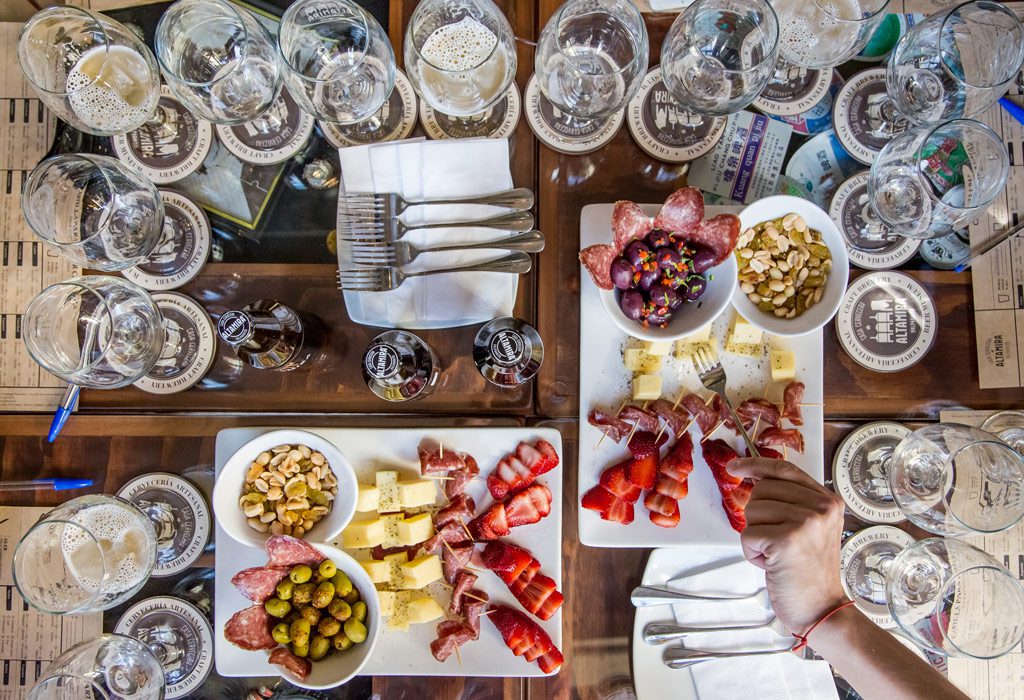
Beers and snacks at Altamira brewery in Valparaiso.
Accommodation in Valparaíso
1. Casa Higueras is a boutique hotel overlooking the port. From R1750 per person sharing.
2. La Valija Hostel has dorms from R200 per person and double rooms from R300 per person sharing.
3. PataPata Hostel has dorms from R180 per person and double rooms from R280 per person sharing.
4. Hostal Jacaranda & Home has dorms from R165 per person and twin rooms from R275 per person sharing.
Also read: The street art of Valparaíso
The Maule Valley
Encounters with enterprising Chileans were to become my lasting impression of Chile, where artisanal start-ups and small-scale local production has been thriving in recent years. In 1990, when Chile returned to democracy after 27 years of military rule, Francisco Gillmore was another who didn’t waste any time. Within a few months he’d bought a dilapidated cluster of vineyards in the central Maule Valley and he and his daughter, Daniela, and winemaker son-in-law, Andrés Sanchez, got to work.
Clik here to view.
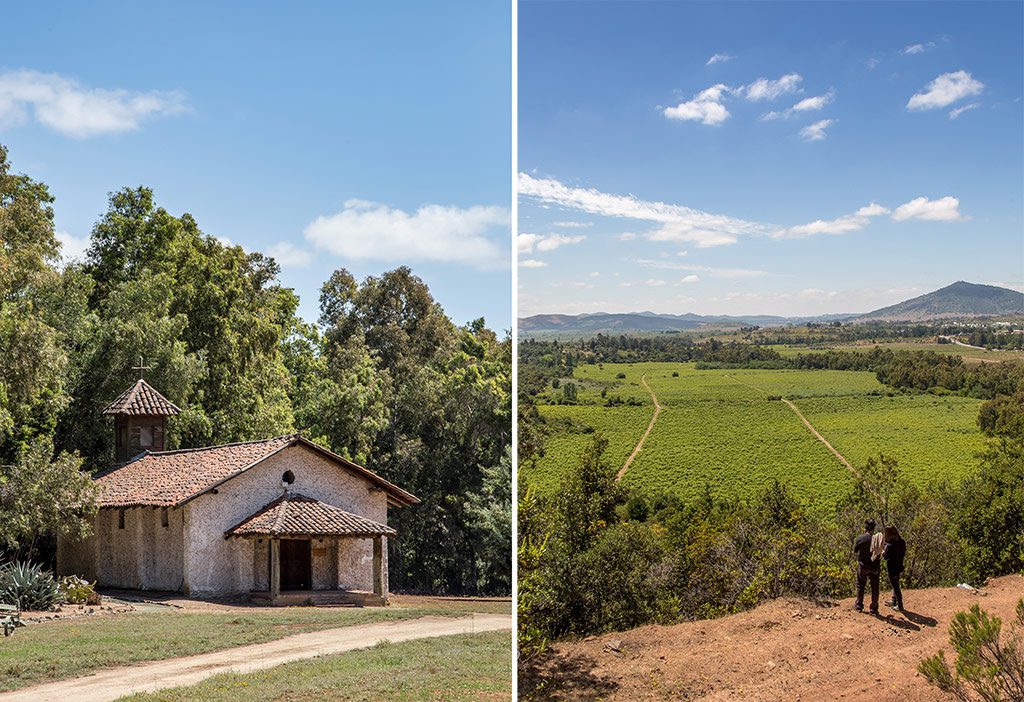
Gillmore Wines has roots dating back 300 years.
When I arrived for a tasting, Andrés began by explaining that Maule used to produce nearly all of Chile’s wines, but what was once a rich, politically powerful heartland fell into neglect under the military junta.
‘100 years ago Chileans drank over 50 litres of wine a person a year,’ he said, a touch wistfully. ‘Now it is less, down to 18 litres a person. But the key to success is to be different, to stand out. This is why we started making Vigno in 2011.’
Vigno is a new blend, spearheaded by Andrés himself and unique to his corner of the valley. To produce Vigno, vines must be dry-farmed (after an initial grafting, they are never watered again), and the final blend must contain at least 65 percent carignan, a Spanish/French grape traditionally cultivated in Maule. Dry farming yields only five tonnes of grapes per hectare (against an irrigated yield of 12), so the volumes are small. Undaunted, Andrés has banded the local farms together to create a quality product, which I sipped, and did not spit, as the fading light touched the prickly pear and acacia trees outside.
Clik here to view.
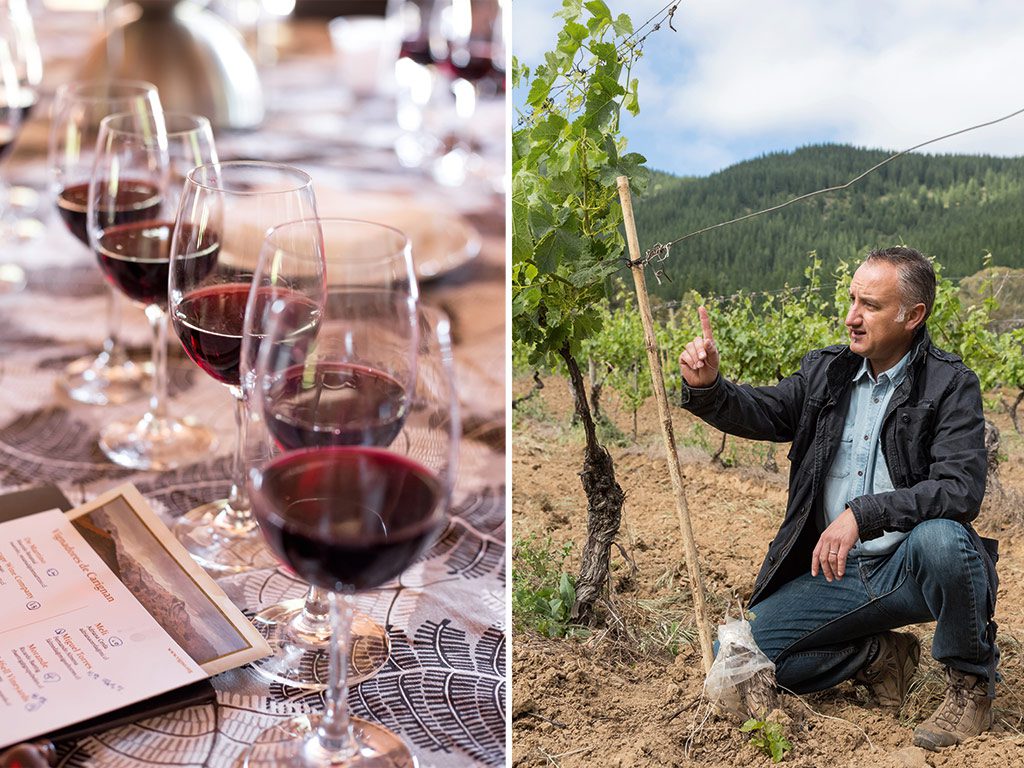
Andres Sanchez of Gillmore Wines (right) is the winemaker behind Vigno, a new red blend unique to the Maule Valley.
Things to do in Maule Valley
1. Taste Vigno wines at Gillmore Wines for R130 per person. The estate also has spacious rooms from R2345 per person sharing, B&B.
Chiloé Island
And then there was Paulo Perman, perhaps the most cheerful, jolly soul I’ve ever met. If Santa Claus is real, he might be Paulo, moonlighting in chilly Chiloé. A one-time pig farmer, Paulo convinced local dairy farmers not to discard their unwanted, overripe cheeses, but give them to him to use as pig feed. Over the years he kept more and more for himself until one day he had an epiphany: sell the pigs and make cheese full time. From his small farm near the town of Castro, he’s now reintroducing the old methods of mature cheese-making to the island. He says business is tough, but he’s surviving, and loving every minute.
Clik here to view.
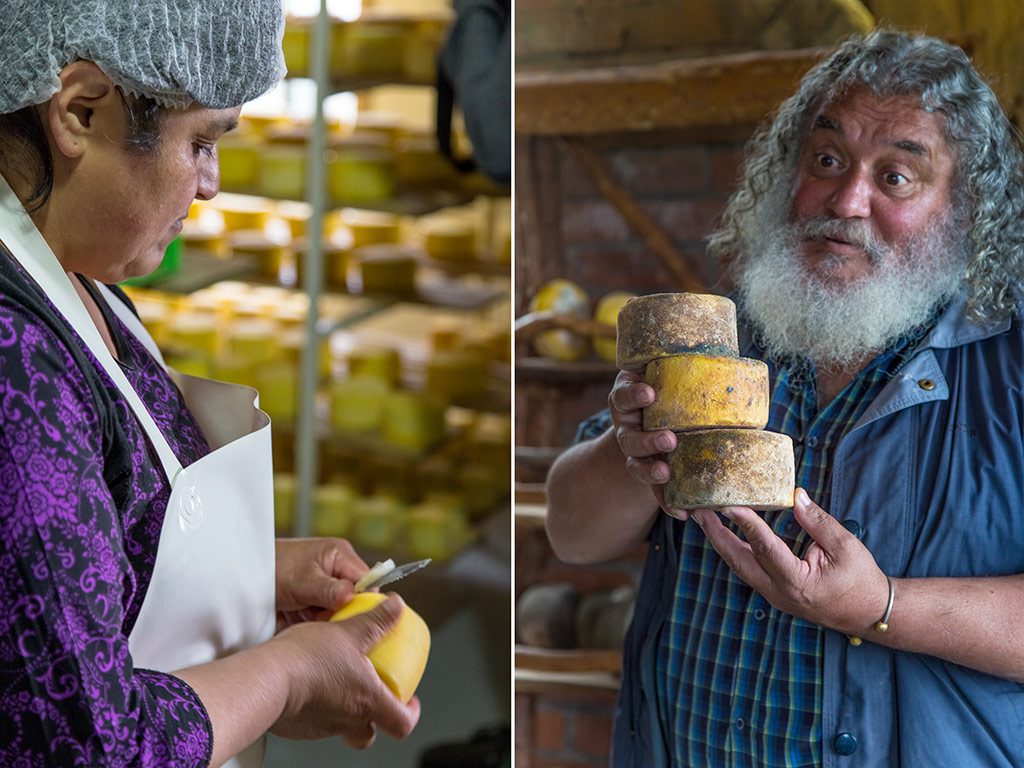
Paulo Perman (right) is reintroducing the art of mature cheese on Chiloé Island.
Chiloé is reached by ferry from the Chilean mainland for about R265 per vehicle. It’s a 30-minute ride and if you’d slept on the long journey south you might think you’d woken up on the Garden Route. Green hills roll into tidal estuaries and narrow roads twist through dense woods. Chilotes (as islanders are called) have a strong sense of pride in both their traditions and natural resources. Mauricio Ayala, a local chef who calls one of Castro’s brightly coloured palafitos (stilt houses) his home, works with 15 Chiloé restaurants dedicated to serving dishes made entirely with island ingredients. They have a lot to choose from.
‘I have a bank of seeds that includes 1 200 different types of potato,’ he told me. ‘500 of those are native to Chiloé.’
Clik here to view.
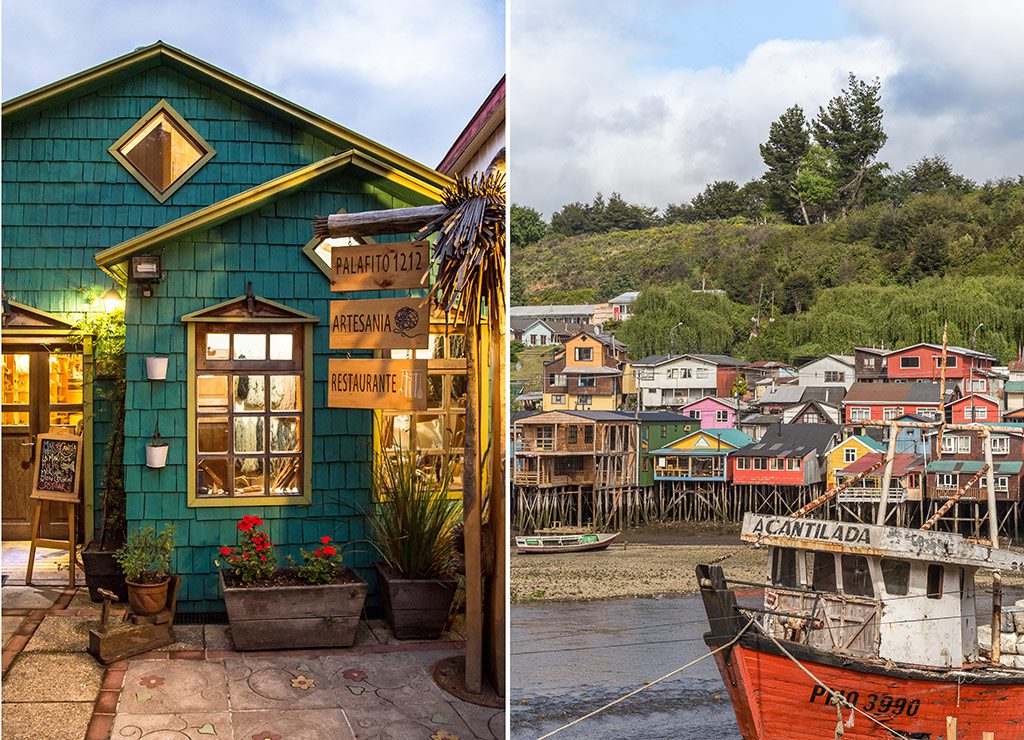
LEFT: Mar y Canela restaurant, in Castro, serves locally sourced food and beer. RIGHT: The stilt-house palafitos of Castro, Chiloe Island.
For dinner I was treated to a local dish, curanto, a sprawling feast-day meal of huge Pacific mussels, sausage, chicken, potatoes (including a bright purple papa bruja or ‘witch potato’) and other local delicacies, prepared in a fire pit under squares of cut turf and giant nalka leaves. Curanto is part of Chiloé’s minga tradition where community and collective support is celebrated (think Ubuntu). When neighbours help with the harvest or barn building, curanto is how you thank them.
Clik here to view.
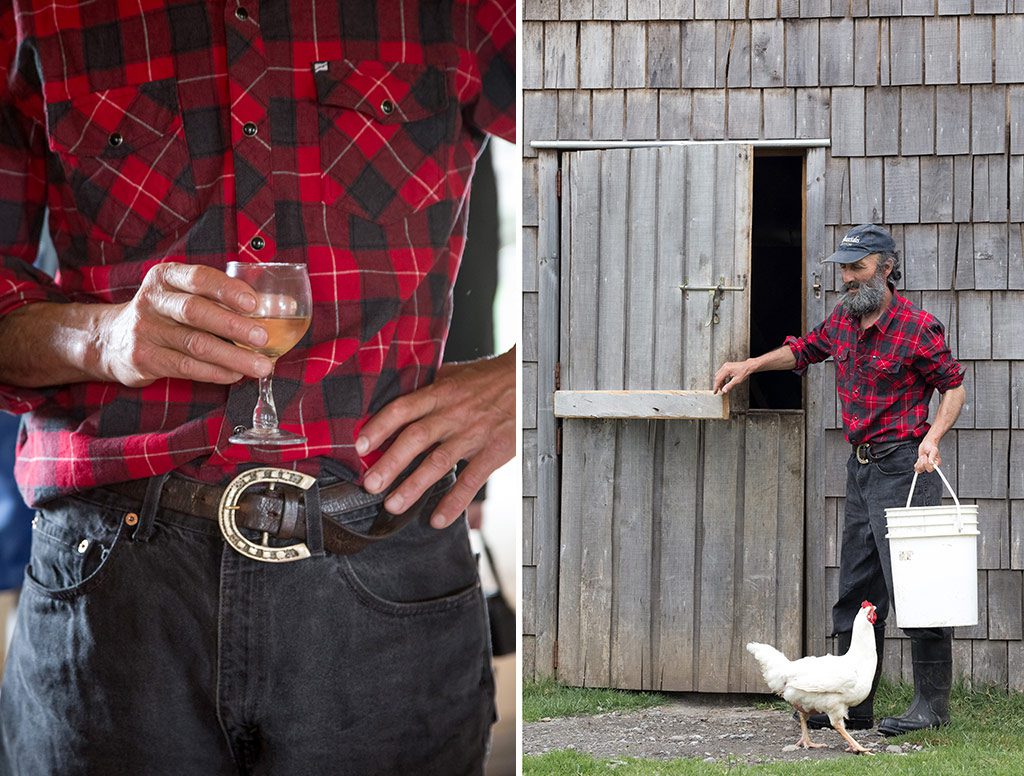
Don Luis Gallardo Gallardo farms sheep for wool, one of Chiloe’s main industries, on his farm esfuerzo (effort).
Clik here to view.
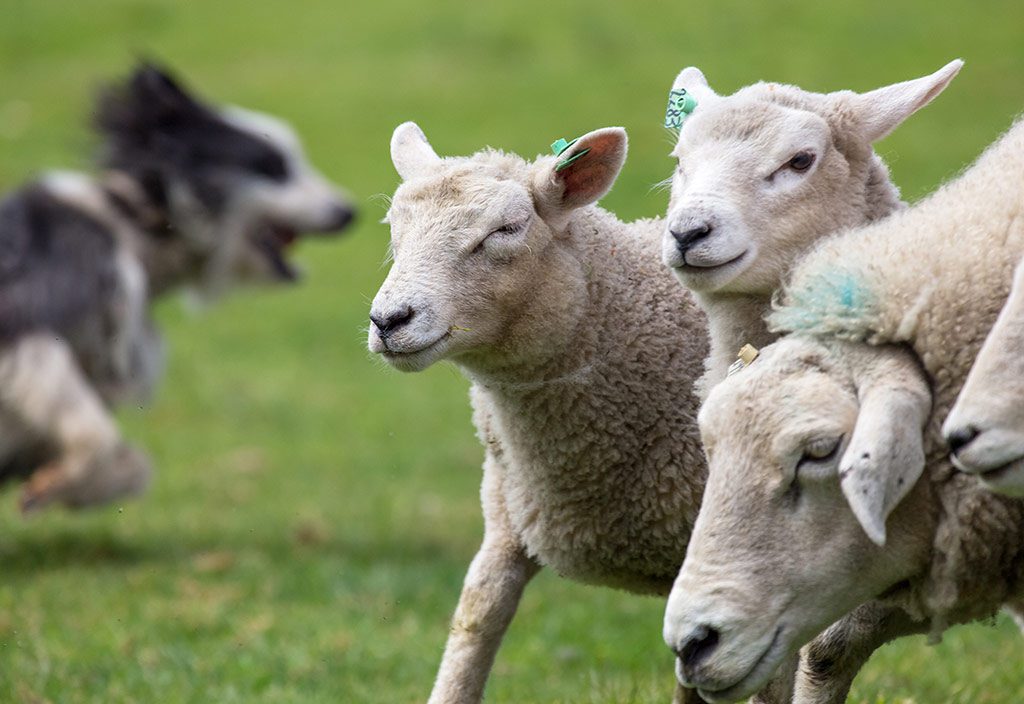
With short whistles and hard signals, Don Luis sends his expertly trained dogs out to round up his sheep.
Clik here to view.
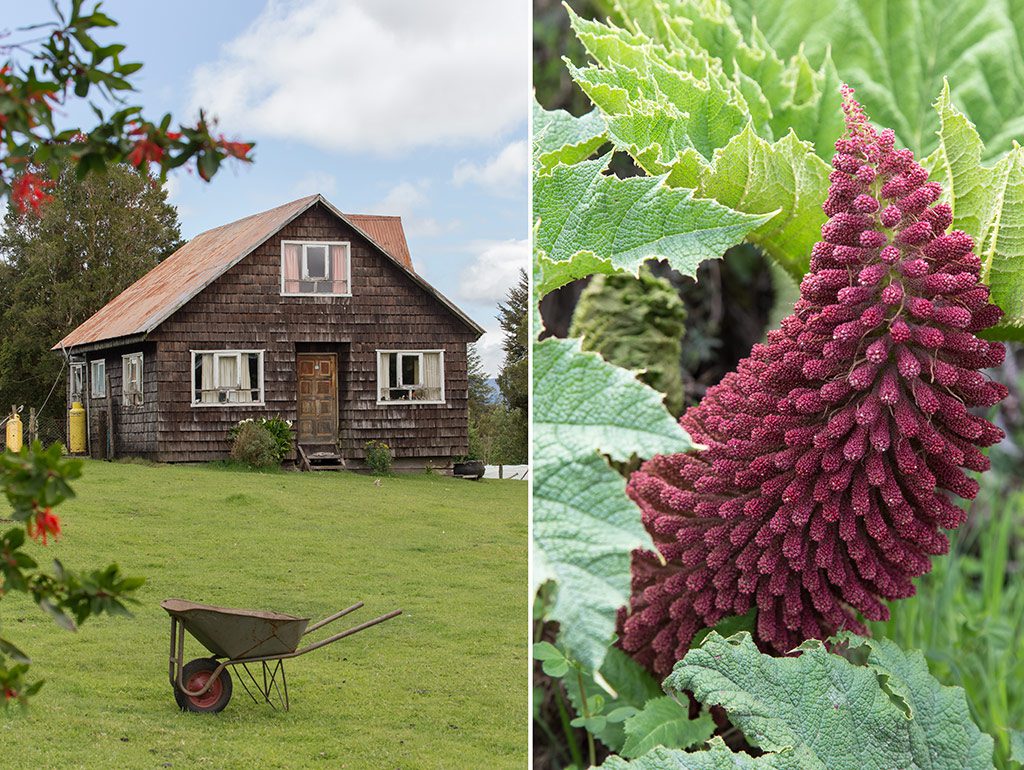
LEFT: Esfuerzo farm, 15km from Chonchi, sells hand-made products from local wool. RIGHT: Nalka leaves are used to prepare one of Chiloe’s most important feast-day meals: curanto.
Things to do on Chiloé
1. Embark on a two- or five-day trek at Parque Tantauco, the most pristine area of the island. From R1600 per person per day, all inclusive with Chiloé Natural.
2. Stop at Paulo Perman’s roadside shop, four kilometres south of Chonchi, to sample traditional cheese and dairy products.
3. Eat at Mar y Canela. It serves delicious meals from one of Castro’s flamboyantly painted palafitos and has great views and even better, locally sourced food and beer. Meals with drinks from R380 per person.
Accommodation on Chiloé
1. Hotel Parque Quilquico is a sustainably engineered luxury hotel near Castro town. From R1470 per person sharing.
2. Palafito Hostel has dorms from R280 per person and double rooms from R395 per person sharing.
3. Palafito Waiwen has dorms from R290 per person and rooms from R485 per person sharing.
4. Parque Tantauco has camping for R130 per tent.
Santiago
Back in Santiago it was 7.30pm, still rush hour, and I was stuck in traffic en route to my final stop of the trip: dinner at Fuy restaurant in the north-eastern suburbs. There was a much anticipated futbol mundial qualifying game against Uruguay that night (Chile lost; cue national depression). Apparently everyone was rushing to opposite ends of the city to watch.
Clik here to view.
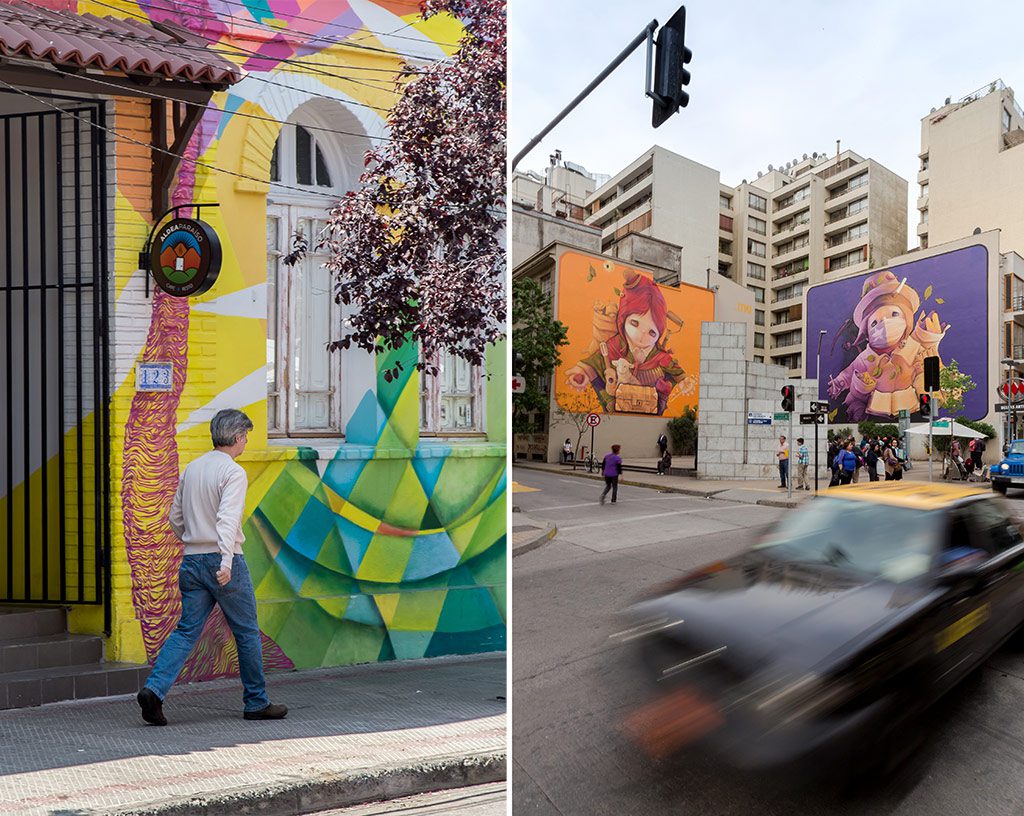
Santiago’s streets are bright with street art, including some famous pieces by renowned artist INTI (left).
I’d spent the day in a mad rush myself, trying to see as much as possible before my flight the next morning. First a guided walking tour, a few museums, galleries and the national library; then a visit to the sprawling central food markets, a quick café con piernas, and a 300-metre flip up the Sky Costanera, the highest viewing deck in South America.
I was tired, a touch delirious with latent jetlag, and trying to understand why this Spanish-speaking country on the far side of the world felt so much like home. Spinning that globe 30 years ago I had barely any notion of what was unfolding around me in late-80s South Africa, let alone in a similarly tumultuous Chile. By the end of military rule on 11 March 1990, an estimated 3000 Chileans had been tortured and murdered, 40000 vanished without trace, and almost 200000 exiled. It’s a country with an unhappy recent past, with unanswered questions and much that still needs to be resolved. Maybe that was part of it. That and the startlingly familiar landscapes, the warmness of the people, the recent explosion of hipster food and craft beer, the excellent wine, the culinary traditions. Know how Chileans celebrate their country’s founding – on 18 September each year? A national holiday: when everybody braais.
Clik here to view.
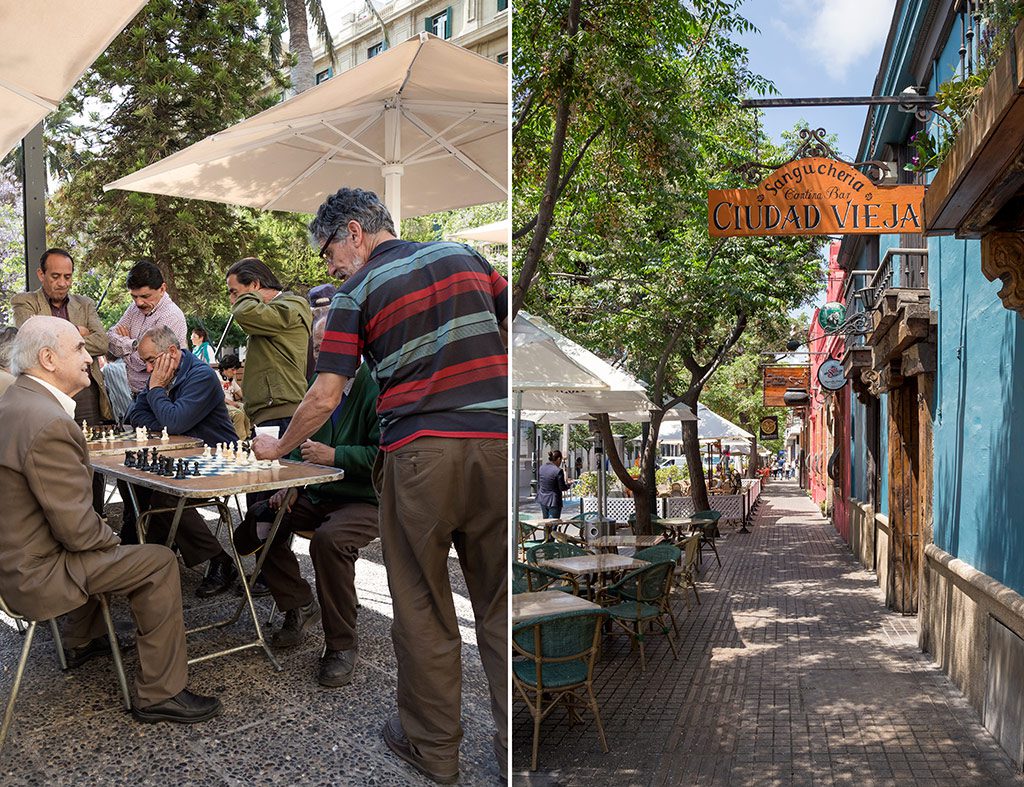
LEFT: Old and young gather to play chess the Plaza de Armas. RIGHT: Strolling the streets of Bella Vista in central Santiago.
Later, over an incredible tasting menu, Francisco Mandiola, head chef at Fuy, seemed to embody everything I’d come to know and love about Chile: modest, quiet, but proud of his country and determined to impress. Following numerous Chef of the Year accolades and a shining career in New York City, he was now back in Santiago, personally invested in this new venture, and glad to be home. Presented with exquisite Chilean sea urchins and oysters arranged with utmost care over hand-picked beach stones and Pacific seawater, it struck me that I was going to be very sad to leave this place – finding and losing this home away from home. It would take more than 10 days to properly put my finger on Chile, but given half the chance I’d be back. Dessert came, billowing long wisps of evaporating dry ice. I tucked in for the last time. It may have been the jetlag but there were emotions in every bite.
Clik here to view.
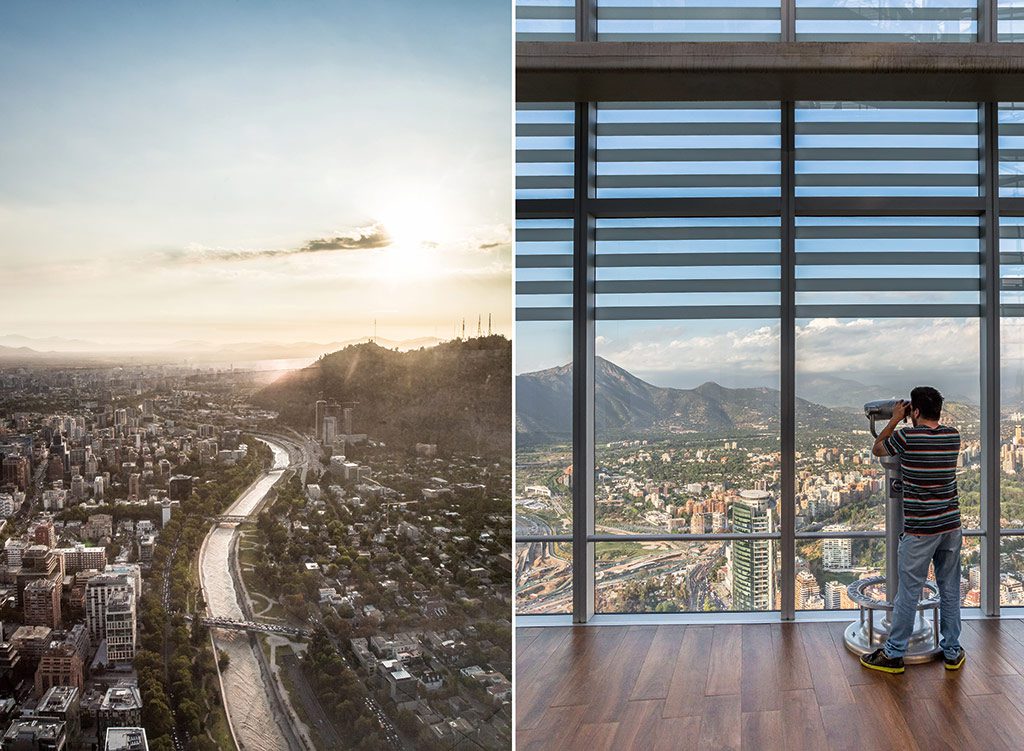
The views from Santiago’s Sky Costanera viewing deck, 300m above the city.
Things to do in Santiago
1. Stroll through La Vega food market. It’s loud in volume and colour. Sample local produce like fresh cherimoya (custard apple).
2. Browse The National Library of Chile which houses the splendid American Library of José Toribio Medina. Entrance is free.
3. Visit the Museum of Memory and Human Rights which deals with Chile’s recent history. Entrance is free.
4. Go to the Natural History Museum. Entrance is free.
5. Check out the Plaza de Armas, Santiago’s central square. It’s popular with young and old, playing chess beneath the trees.
6. Go to the top of the Costanera Centre, the highest viewing deck in Latin America. Tickets cost R110 per person.
7. Climb San Cristóbal Hill. It has great views and is capped by a 22-metre high statue of the Virgin Mary.
8. Santa Lucía Hill is where Santiago was founded and a popular spot for pololear (chaste dating) and soft conversations.
9. Take a Tours for Tips guided walking tour. It’s a great way to learn about the capital. Tours are two to three hours. R120 per person is a good tip.
10. Do an exclusive walking tour with private guide Felipe Echeverría. R765 for two per half day, with discounts for larger groups.
Clik here to view.
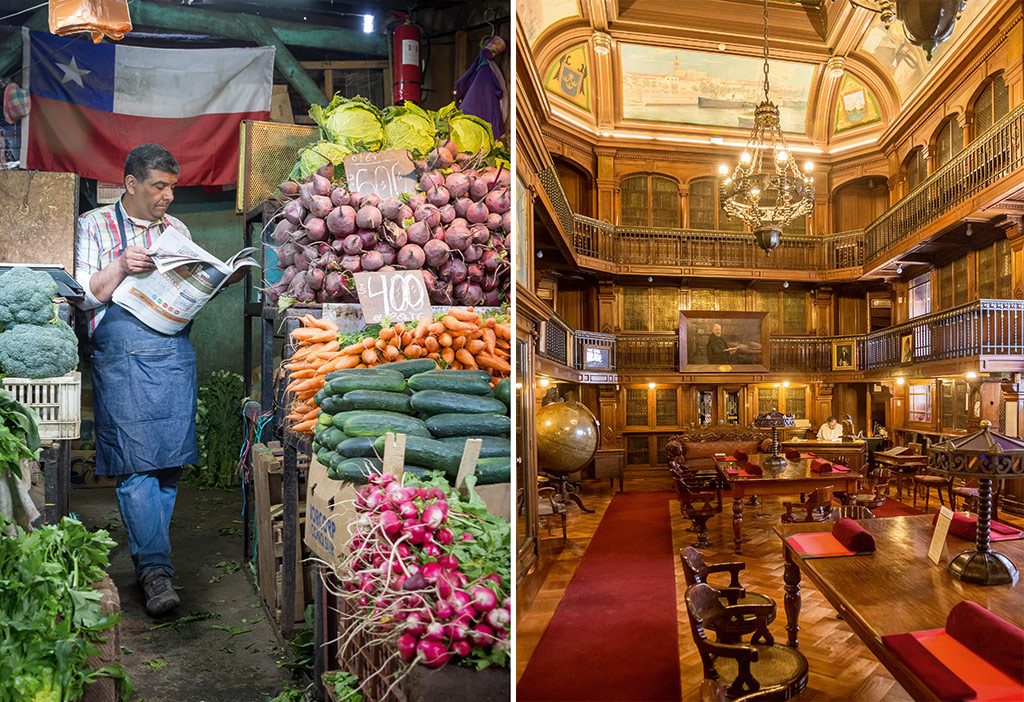
LEFT: There’s plenty to see and sample at Santiago’s bustling La Vega food market. RIGHT: The stately quiet of the American Library of Jose Toribio Medina.
Accommodation in Santiago
1. Hotel Singular is luxurious and central. From R2200 per person sharing.
2. Casa Muriel is a boutique hotel in the south-eastern suburbs. From R760 per person for a four-sleeper suite or R1000 per person sharing a double.
3. Andes Hostel is central, with a small bar and kitchen on the ground floor. From R275 per person in a dorm and R460 per person sharing a double room. andeshostel.com Andes Apartments is nearby and offers private self-catering accommodation for groups of two to four. From R350 per person sharing.
4. Hostal de la Barra is also central, with dorms from R290 per person, a four-sleeper apartment for R450 per person, small doubles from R530 per person. Breakfast and parking included.
Where to eat in Santiago
1. Fuy is one of Santiago’s finest dining venues. À la carte and the tasting menu are from R770 per person.
2. 99 Restaurante’s four-course lunch is R215 per person and nine-course dinner R550 per person, including wine.
Clik here to view.
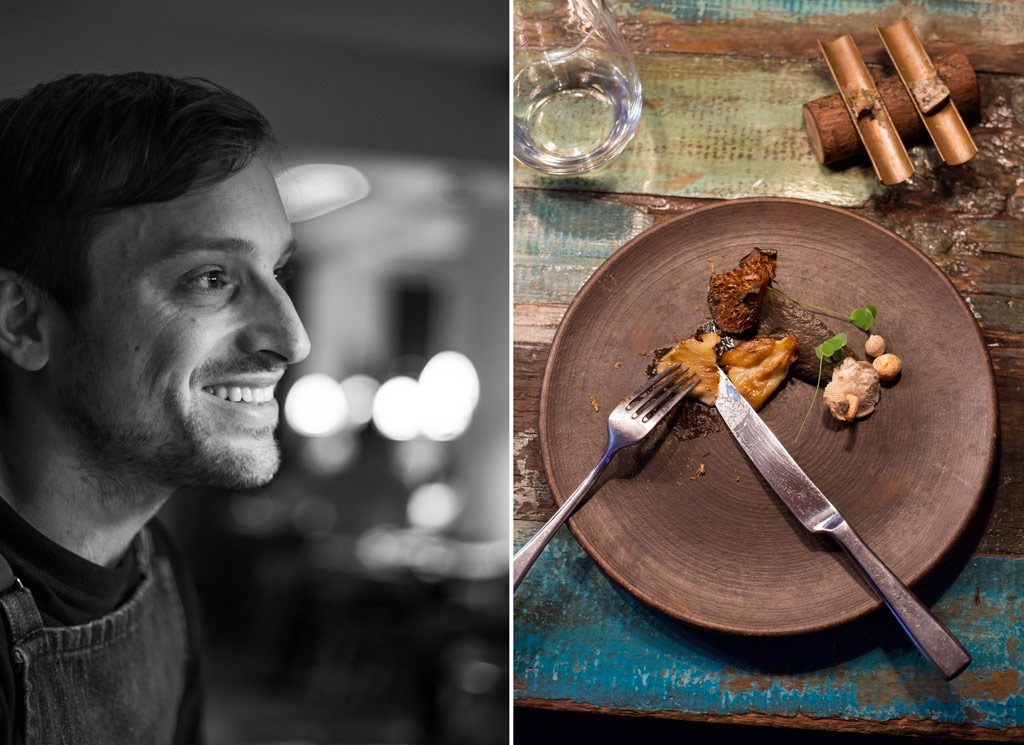
99 Restaurante’s delicate tasting menu changes daily, using home-grown and locally-sourced produce under the supervision of owner and head chef, the lovely Kurt Schmit (left). Kurt has no truck with recipes and prefers to experiment, putting all his faith in local, small-scale suppliers (from whom he often buys their entire stock), and his own small garden.
Plan your trip
If you’re travelling to Chile you’ll likely spend at least a day in Santiago. Spend a few, there’s plenty to see and do. There are no direct flights from SA to Santiago. I flew from Johannesburg via Sao Paulo, Brazil with SAA and LAN Airlines. Uber taxis operate in Santiago at similar rates to SA and most bars and hotels have free Wi-Fi so you can book a ride. For journeys beyond the capital, hiring a car is best; otherwise Pachamama By Bus offers a daily hop-on, hop-off bus service throughout Chile. Single fares from R925 per person, or buy a multi-stop, timeless ticket and spend as long as you like in each spot. From R3200 per person for seven stops. English is not widely spoken in Chile, especially among the older generation. A Spanish phrase book or phone app will help. Spring is the best time to visit. You’ll need a yellow fever certificate if you’re transiting through Brazil. Expect to spend between R1000 and R1500 a day for mid-range accommodation and all expenses.
This story first appeared in the April 2016 issue of Getaway magazine.
Our April issue is packed full of great holiday ideas for 2016. Get your copy today.
Clik here to view.
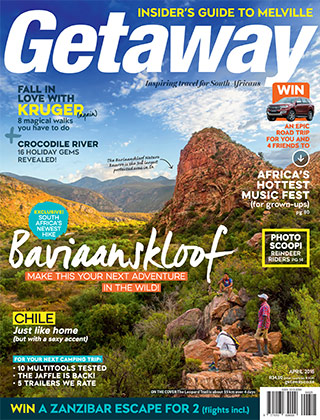
This article, The foodie’s guide to Chile, was originally posted on the Getaway Blog by Chris Davies.